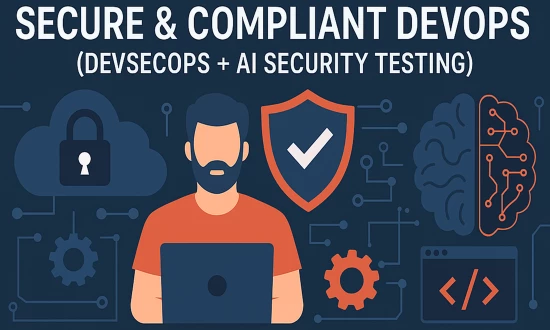DevSecOps integrates security practices into the DevOps process, ensuring that security is prioritized throughout the entire software development lifecycle (SDLC). This model addresses the evolving cybersecurity landscape, where vulnerabilities can arise at any stage of development. By embedding security earlier in the process—often referred to as "shifting left"—organizations can identify and remediate vulnerabilities proactively, rather than as an afterthought at the end of development.
Key Best Practices in DevSecOps
1. Shift Left
This principal advocates for conducting security assessments as early as possible in the development cycle. By incorporating security testing in the design and planning phases, vulnerabilities can be identified and corrected before they become embedded in the final product.
2. Automate Security Testing
Automation can significantly enhance security testing efforts by integrating tools for Static Application Security Testing (SAST), Dynamic Application Security Testing (DAST), and Software Composition Analysis (SCA) within the CI/CD pipeline. This integration allows for continuous security checks and reduces the chances of human error.
3. Continuous Monitoring
Real-time monitoring of applications and infrastructure helps detect and respond to threats quickly. This includes using advanced analytics to observe user behavior and system performance, identifying anomalies that might indicate security incidents.
4. Collaboration Across Teams
Encouraging collaboration between development, security, and operations teams is fundamental. By breaking down silos and creating a culture where everyone is responsible for security, organizations can foster a shared commitment to security best practices.
5. Secure Coding Standards
Establishing and enforcing secure coding standards can help prevent vulnerabilities during the development stage. Developers should be trained on best practices for secure coding to ensure their outputs minimize risk.
6. Implement Policy as Code
Utilizing Policy as Code (PaC) can help ensure that security policies are consistently enforced across all development stages. Automating policy compliance checks reduces the risk of lapses and errors in security adherence.
7. Incident Response Planning
A solid incident response plan tailored to DevSecOps practices is essential for effectively managing security breaches. Teams should regularly test and refine their incident response strategies to ensure they can react swiftly to breaches.
8. Education and Awareness
Regular training and education for all team members, including developers and operations staff, on emerging security threats, secure coding practices, and tool usage is critical. This helps embed a security-first mindset throughout the organization.
Integrating AI for Enhanced Security
Leveraging artificial intelligence (AI) in DevSecOps can significantly enhance security practices. AI can automate routine tasks, improve threat detection through machine learning, analyze code for vulnerabilities, and predict future threats based on historical data. Here are some ways AI can be integrated into DevSecOps:
- Automated Threat Detection: AI can analyze coding patterns and commit histories to identify vulnerabilities in real-time.
- Enhanced Code Review: AI tools can assist in performing more complex code analyses rapidly, catching issues that may not be evident through manual review.
- Continuous Compliance: By automating compliance checks against industry standards, AI reduces the burden on security teams, ensuring standards are continuously met throughout the development process.
- Predictive Analytics: Using AI for predictive analytics allows for anticipating potential security risks based on existing patterns, allowing organizations to bolster their defenses preemptively.
- Automated Remediation: In cases of identified vulnerabilities, AI can expedite the remediation process by providing contextual recommendations or automated fixes, significantly improving response times.
Conclusion
Adopting a DevSecOps approach, complemented by AI-driven security enhancements, is essential in today’s fast-paced digital environment. By embedding security practices into every facet of the software development lifecycle, organizations can not only enhance their security posture but also foster a culture of shared responsibility that enables rapid, secure software delivery. Emphasizing continuous education and using advanced tools will further strengthen these efforts to mitigate risks associated with modern cybersecurity threats.



